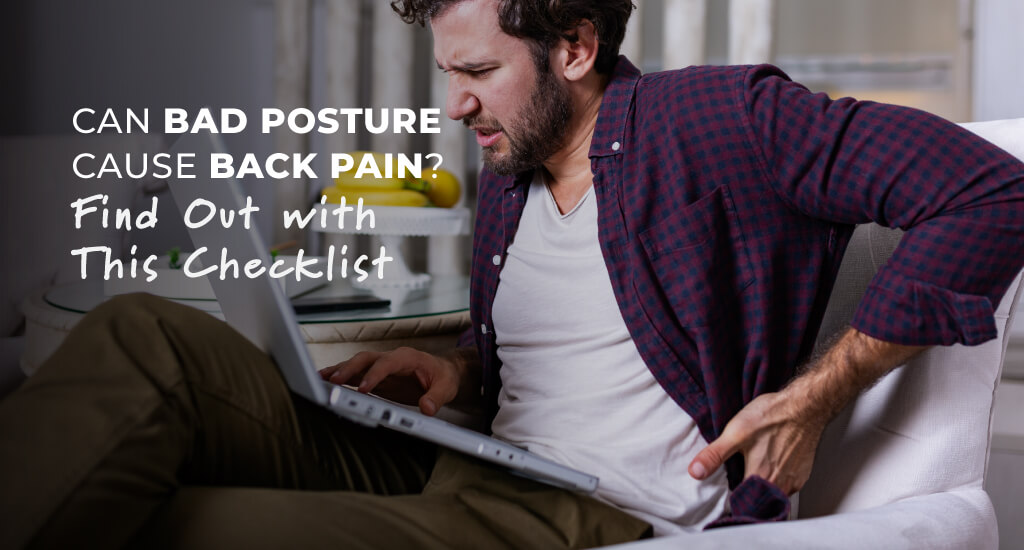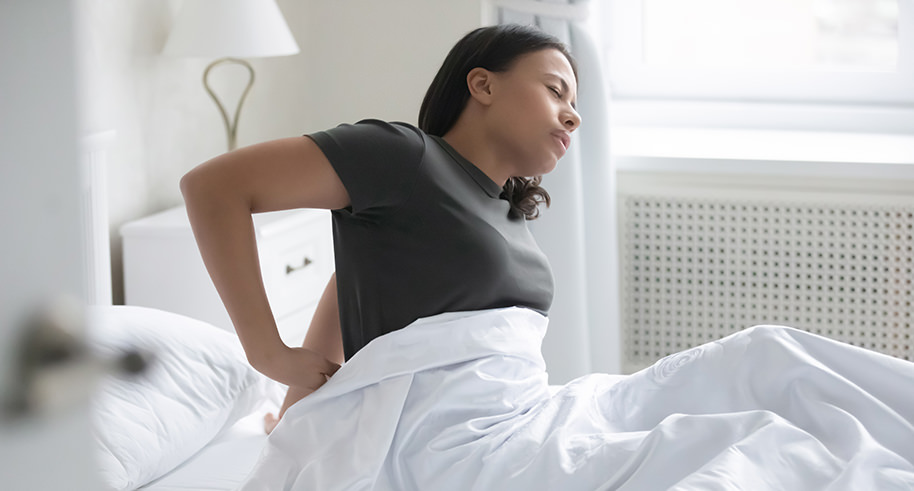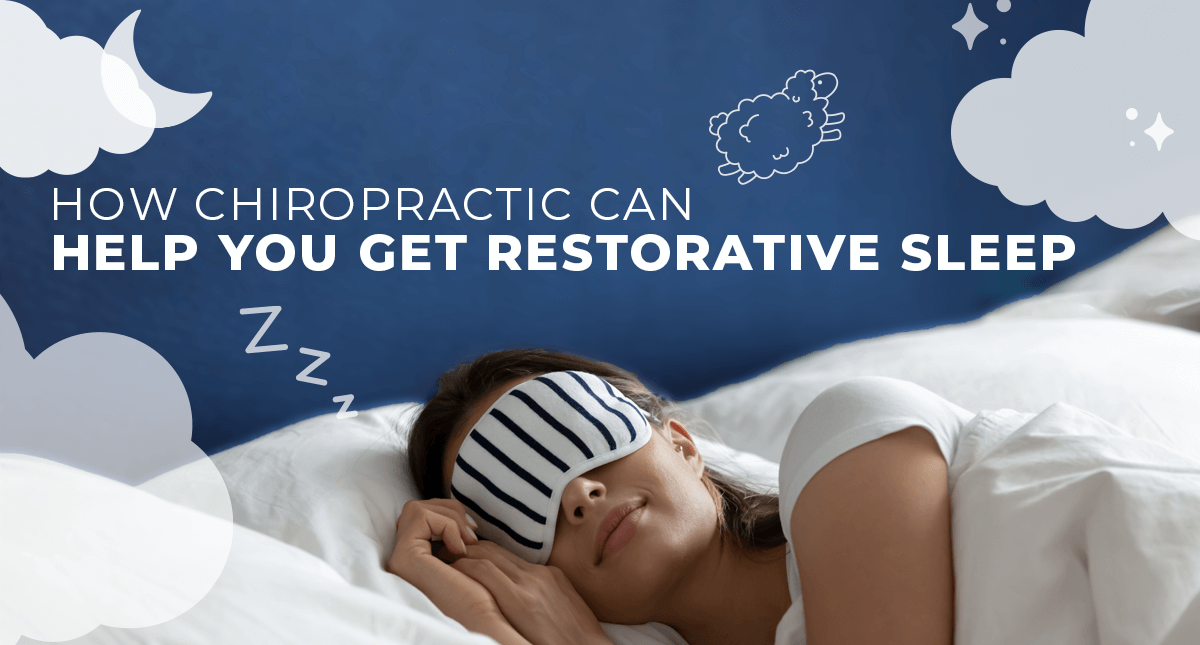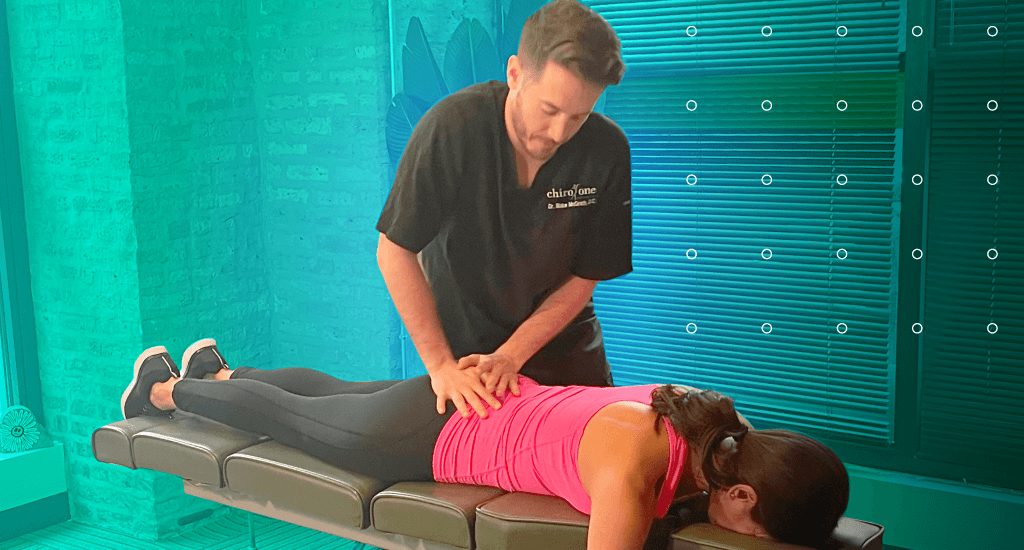By Mattress Advisor: According to a study done by the University of North Carolina at Chapel Hill’s School of Medicine, 80 percent of the population will experience an episode of low back pain at some point in their lifetime. This fact is quite concerning for more than one reason. One of them being that low back pain is the second most common cause of disability in the U.S.
Unfortunately, there are many factors that contribute to back pain issues.
Causes of Low Back Pain
Back pain is caused by a whole slew of issues and aggravated by a handful of others. Age, fitness level, injury, genetics and occupational risks can all play a part in whether or not you will experience low back pain at some point in your life.
Physiologically, one cause of back pain is called spinal stenosis. According to the National Institute of Neurological Disorders and Stroke, spinal stenosis is the narrowing of the spinal column that puts pressure on the spinal cord and nerves, and it can cause pain or numbness.
Although not all causes of low back pain can be prevented, there are some that can be managed. One of them being… your mattress.
When it comes to back pain, your mattress will never be 100 percent of the problem. But more often than not, it does contribute to the pain you are experiencing.
If you are sleeping on a mattress of poor quality, it may be provoking issues of chronic low back pain without you even knowing it.
Take a look at your sleeping structure. What condition is it in?
- Do you notice a sag or dip forming in the center of your mattress?
- Do you have issues finding a comfortable sleeping position because your mattress fails to respond to your body position?
- Do you wake up with aches and pains you didn’t notice when you went to bed?
These are all signs your mattress is aggravating your back.
As a mattress ages, it naturally loses the support it once had. Mattresses of 10+ years begin to “hammock” a person. This creates a pinch point in the lower lumbar spine, which provokes issues of chronic pain. Without proper support, your mattress will promote poor sleeping posture, throw your spine out of alignment and strain your muscles.
So How Do You Find a Mattress that Promotes a Healthy Back?
There is no single mattress type, style or firmness level that supports all people. We all have different body shapes, conditions, and comfort preferences. So first and foremost, you need to find the mattress that is right for you and your body type.
If you don’t know where to start, check Mattress Advisor’s Mattress Finding Quiz.
Once you make the decision that it’s time for a new mattress, check out Porch’s mattress buying guide for tips on picking the right mattress!
Besides personalization, you’ll want to check out how well your mattress promotes spinal alignment and pressure relief:
Spinal Alignment
All proper spinal alignment means is that your spine is in a neutral position. You want to see a straight line from your tailbone all the way to the base of your neck.
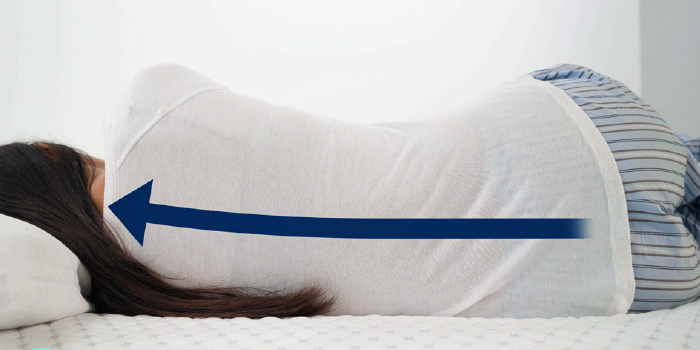
Spinal alignment is very important when it comes to pain management. Just like in our waking hours, we need to keep good posture while we sleep.
Dr. Michael McGovern, former Director of Chiro One Wellness Center of Vernon Hills, explains:
“The impact your bed has on spinal alignment is dependent on the individual’s anatomy. Does a pear-shaped side sleeper need a softer mattress to accommodate the curviness of their anatomy? Does a back sleeper with a hyper or hypolordotic lumbar curve also require a softer mattress to support their lumbar region?
The answer is not straightforward, and as always, the best advice I can recommend is to spend hours on the bed you’re considering buying before making your final decision. We all have different sizes and shapes and will respond better to certain mattress types.”
Pressure Relief
Remember spinal stenosis? This is where your mattress’ pressure relieving ability plays a role.
Just to recap, spinal stenosis provokes issues of low back pain when pressure is put on the spinal cord. Turns out, your mattress may be guilty of putting pressure on your joints.
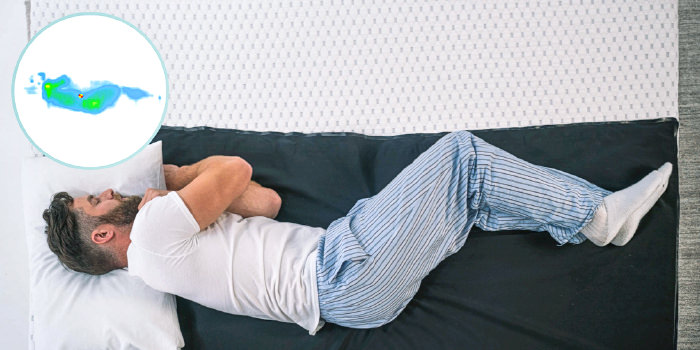 Mattress Advisor testing pressure relief on a mattress using a pressure mapping film.
Mattress Advisor testing pressure relief on a mattress using a pressure mapping film.
The materials and construction of your mattress all impact how well it relieves pressure. Typically, memory foam mattresses are best for pressure relief, but well-made innerspring and latex mattresses can be a good option too. Just be sure to do your research and read reviews.
Even though a new mattress might seem like a significant investment, getting quality, restorative sleep is critical to your health. That makes a mattress one of the most important healthcare products on the market.
Other Sleep Tips For Minimizing Low Back Pain:
- Don’t purchase for comfort. Purchase for support.We shouldn’t purchase a mattress for the sole purpose of comfort (although comfort does play a role when it comes to being able to fall asleep). You must also consider the support the mattress provides (hence, they aren’t the same thing). Something that’s comfortable for a few minutes in a store doesn’t necessarily optimize sleep quality and pain management months down the road. How will it hold up overtime? After all, it takes roughly 30 days for your body to settle into a new mattress.
- Consider adjusting your sleeping position
Sometimes your sleeping position is to blame when it comes to back pain.
Experts agree sleeping on your back is the best position to sleep in. It’s in this position that your spine rests in the most neutral position. Next, is sleeping on your side. Sleeping on one’s side, especially with the knees drawn up in a fetal position, can help open up the joints in the spine and relieve pressure by reducing the curvature of the spine. Lastly, the stomach. Sleeping on the stomach is not typically recommended. But if you can’t shake the habit, at least find a mattress that provides good pressure relief or try putting a pillow under your pelvis to promote better spinal alignment.
.caption {
font-size: 14px;
text-align: center;
margin-bottom: 20px;
display: inline-block;
line-height: 18px;
padding: 0 7px;
}
.divider {
height: 1px;
border-bottom: 1px solid #eee;
margin: 30px 0 0 0;
}
.qoute {
border-radius: 17px;
border-top: 0;
background-color: rgba(0, 0, 0, 0.025);
/*background-color: #f8fbf2;*/
width: auto;
padding: 0;
/*color: #005195;*/
color: #777;
padding: 2em 2em 1em 2em;
position: relative;
max-width: 100%;
margin-top: 20px;
}
.contributer {
padding: 5px 10px;
background-color: #eee;
border-radius: 30px;
display: block;
font-size: 12px;
max-width: 130px;
margin-bottom: 14px;
}
